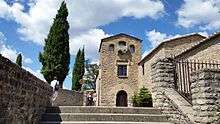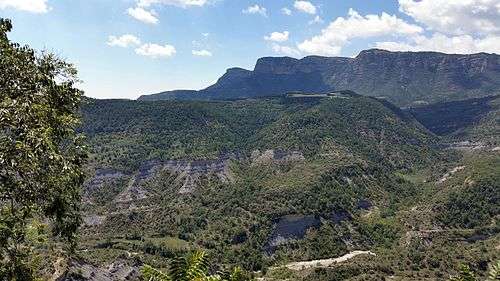Roda de Isábena
Roda d'Isàvena is a village in the municipality of Isàvena, in the region of Ribagorça, in the province of Huesca, Spain.




It was the capital of the county of Ribagorça and site of a diocese, the reason why the Romanesque Cathedral of Roda was built between the 11th and 12th century. Located near the Isàvena river, the county of Ribagorza was one of the founding domains from which was built the Kingdom of Aragon. The village of Roda rises over a mountain which dominates the access to the valley of Isàvena. During the tenth century it was a fortified village which served as a vigilance point between the Muslim Taifa of Saragossa and the Christian county of Ribagorça, which would ultimately become part of the Kingdom of Aragon.
Episcopal see
About the middle of the tenth century, Roda d'Isàvena became an episcopal see, with the inauguration of the Cathedral of Sant Vicenç de Roda d'Isàvena, and the political capital of the county of Ribagorza. The removal of the see, first to Lleida and then to the diocese of Barbastro-Montsó reduced the importance of the locality. The Spanish desamortización (a long historical process in which "unused" territories, generally owned by the Church, were publicly auctioned) and the predation of the 20th-century art thief René Alphonse van den Berghe despoiled it of some of its rich cultural heritage.
Today
Nowadays, Roda has the distinction of being the smallest Spanish village with a (former) cathedral, and has a hotel in a 17th-century palace.[1]
References
- Eastern Pyrenees Footprint Focus Guide: (Includes Barcelona & Perpignan) Mary-Ann Gallagher, Andy Symington, Dana Faracos 1909268070 2013 "This excellent hotel occupies a noble 17th-century palace in the heart of the town. Rooms have plenty ofhistoric character, but modern conveniences include a spa complex. Roda de Isábena p56 Roda can get busy in summer at the weekends."